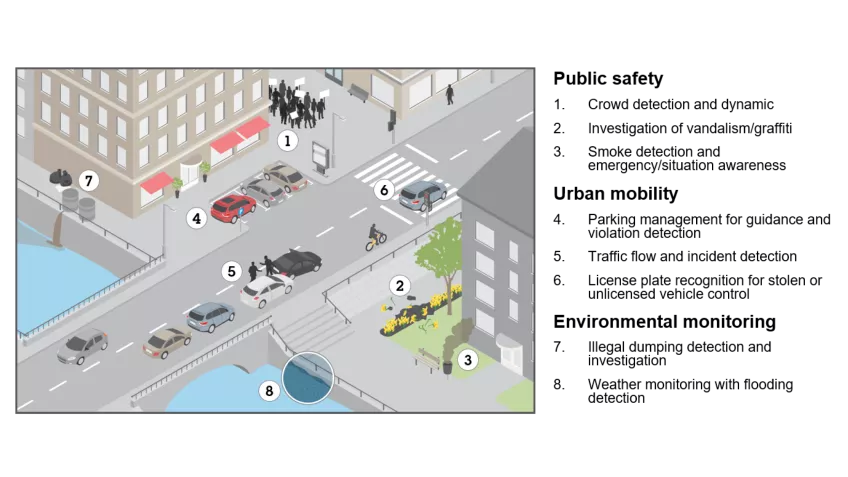
Collaboration is key to successful smart city development. The ecosystem of different public authorities must cooperate to ensure that processes and responses across the city are optimized and efficient. One of the key challenges that we see for cities on their journey to becoming “smart”, is that authorities and organizations work in “silos” with their own agenda. With the right corporation and sharing there is a potential to speed up future developments, as the same source of data can generate value in many different ways, depending on needs.
The sharing of systems, data and insights across authorities will be instrumental to informing decisions on existing and future processes. This collaborative approach acknowledges the value of different data sources and highlights an understanding of current and future needs. Armed with this knowledge, intelligent investments in future-proofed hardware and scalable solutions can be made. A connected video and audio system can be used as critical tools for collecting and assessing data points across the city.
Connected cameras provide an advantage
Network cameras already play a key role in cities, and are normally used for one single use case. A connected camera can be used for visual content, but also as a sensor to provide data and statistics to multiple authorities – from law enforcement to traffic management to environmental monitoring. Ultimately aiding collaboration by breaking down data silos across the city. For example, one camera could provide information on traffic flow and pedestrian safety, while helping the authorities to correlate these factors with environmental concerns, such as the air quality.
However, data capture is only the first step. Within the ecosystem of the smart city, data insights can be used to inform different decisions affecting citizens. It is critical that these insights are considered with the bigger picture in mind. This type of approach will set the scene for additional use cases for connected cameras.

Preparing for the future
As new use cases emerge, it’s important to consider the type of installation used in preparation for this. An open architecture allows new devices to be connected to existing systems, providing an agility, flexibility and scalability that is reacts to the city’s demands.
The installation and type of camera used is critical to the quality of the data captured. Although many cameras can be used, multisensor cameras are well suited to this function, as the 180° coverage provides high detail and minimal distortion. Because these cameras have multiple sensors, they provide wide coverage combined with high image quality and high pixel density. This will be crucial when it comes to analyzing the video content, alongside other data input. Two other useful technologies are video compression and multi-view streaming, which enables different areas in the camera's field of view to be cropped from the full view and streamed simultaneously. Multi-view streaming can help reduce bandwidth and storage use while enabling a large area to be covered with just one camera.
This is particularly relevant when it comes to incident response. The solution can be scaled up to provide the maximum information needed to address the issue and minimise the greater impact on the city.
A connected approach to maximizing ROI
It’s critical for different sectors to work together to ensure that processes are optimized and efficient across the city. Technology is a key enabler and solutions which support collaboration should be prioritized. City authorities must also consider the ROI on all their investments and traditionally have immediately anticipated a limited number of use cases. However, making the investment in the right camera will allow for future use cases.
Connected video surveillance systems are already in a position to be used in this way and open architecture makes it easy for IoT devices to be added to existing cameras. By using these solutions to their full potential, smart cities will be in an optimal position to evolve and address future needs.
